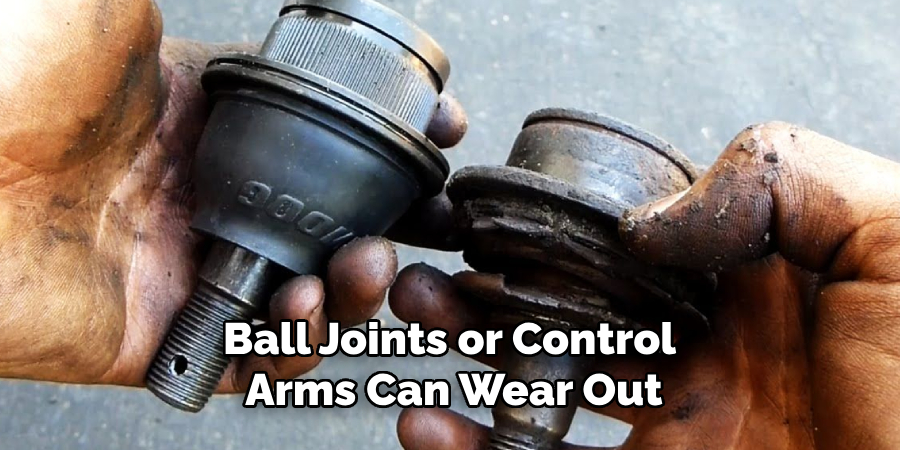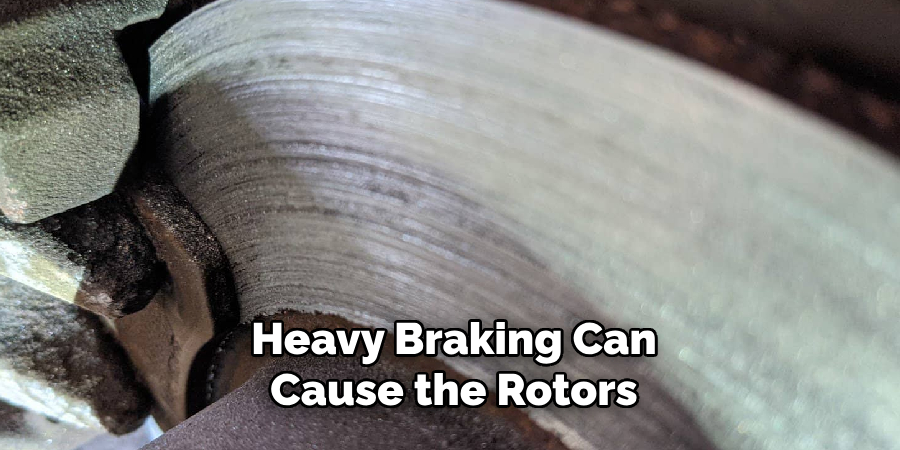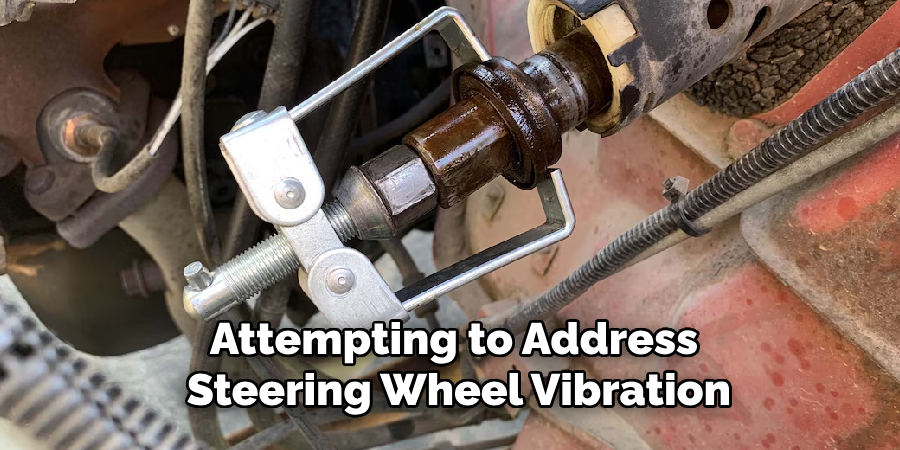Steering wheel vibration can be a frustrating and potentially dangerous issue while driving. It disrupts the comfort of your ride and may indicate underlying problems with your vehicle that need immediate attention. Identifying the root cause of steering wheel vibration is crucial for ensuring both the safety and performance of your car. This guide will walk you through how to fix steering wheel vibration.

Importance of Addressing the Problem
Ignoring steering wheel vibration can lead to more severe and costly issues over time. What starts as a minor inconvenience could evolve into serious damage to critical components like your tires, suspension, or braking system. Additionally, a vibrating steering wheel can compromise your control over the vehicle, increasing the risk of accidents. Promptly addressing the problem not only ensures your safety on the road but also helps extend the lifespan of your car by preventing unnecessary wear and tear. Taking action early can save you from costly repairs and ensure a smoother, more comfortable driving experience.
Common Causes of Steering Wheel Vibration
Several factors can lead to steering wheel vibration, each pointing to different potential issues with your vehicle. Here are some of the most common causes:
- Unbalanced Tires
Unbalanced tires are a primary cause of steering wheel vibration. When the weight distribution around a tire is uneven, it can result in wobbling at certain speeds, which is transferred to the steering wheel. Regular tire balancing can help prevent this issue.
- Wheel Alignment Issues
Misaligned wheels can cause uneven tire wear, leading to vibrations that are felt through the steering wheel. This issue often develops gradually and is usually noticed after hitting potholes or curbs.
- Warped Brake Rotors
If the vibration occurs during braking, it’s often due to warped brake rotors. Irregularities in the rotor surface can cause the brake pads to grab inconsistently, leading to a noticeable shaking sensation.
- Worn Suspension Components
Over time, suspension components like ball joints or control arms can wear out. When this happens, they may fail to absorb shocks adequately, causing vibrations to travel directly to the steering wheel.

- Damaged or Bent Wheels
Hitting a pothole or curb hard enough can bend or damage a wheel. A bent wheel can create a lack of uniform rotation, resulting in vibrations while driving.
- Tire Issues
Tires with uneven tread wear, bubbles, or defects can also be a source of vibration. Regular tire inspections can help identify and solve these problems before they worsen.
Identifying the specific cause of steering wheel vibration is essential to resolving the issue effectively. Once the underlying problem is addressed, you can enjoy a smoother, safer driving experience.
10 Methods How to Fix Steering Wheel Vibration
1. Check Tire Balance
One of the most common causes of steering wheel vibration is unbalanced tires. Imbalanced tires create uneven weight distribution, leading to vibrations at certain speeds. Visit a professional tire shop to have your tires balanced. The technician will use a balancing machine to identify weight discrepancies and attach small weights to the rims to correct the issue. Regular tire balancing not only eliminates vibrations but also extends tire life.
2. Inspect Tire Condition

Worn, damaged, or unevenly worn tires can cause vibrations. Perform a visual inspection of all tires for tread wear, bulges, or punctures. Use a tread depth gauge to ensure even wear across the tire surface. Uneven wear patterns often indicate alignment or suspension issues. Replace damaged or excessively worn tires, and address the underlying cause to prevent future problems.
3. Perform Wheel Alignment
Misaligned wheels can lead to uneven tire wear and steering wheel vibration. A wheel alignment ensures that all wheels are oriented correctly with the vehicle’s suspension and steering geometry. Professional alignment services use specialized equipment to adjust camber, caster, and toe angles to manufacturer specifications. Proper alignment improves handling, reduces vibrations, and enhances overall safety.
4. Check for Bent Rims
Hitting potholes, curbs, or debris can bend your vehicle’s rims, causing steering wheel vibrations. Inspect each rim for visible dents or bends. Minor bends can often be repaired by a professional wheel repair service, while severely damaged rims may require replacement. Always ensure the rims are round and free of deformities to maintain smooth operation.
5. Examine Brake Rotors
Warped brake rotors are a frequent cause of steering wheel vibration, especially when braking. Heat buildup from heavy braking can cause the rotors to warp, leading to uneven contact with the brake pads. If you notice vibrations during braking, have a mechanic inspect the rotors. Resurfacing or replacing warped rotors can eliminate the problem and restore smooth braking performance.
6. Inspect Suspension Components
Worn or damaged suspension components, such as ball joints, control arms, or bushings, can cause steering wheel vibrations. Inspect these parts for wear, cracks, or looseness. Replace any damaged components promptly to maintain proper suspension geometry and eliminate vibrations. Regular suspension maintenance improves ride quality and handling.

7. Check for Loose or Worn Wheel Bearings
Wheel bearings allow the wheels to rotate smoothly while supporting the vehicle’s weight. Over time, bearings can wear out or become loose, causing vibrations and noise. Lift the vehicle and check for excessive play or grinding noises when rotating the wheels. Replace worn or damaged wheel bearings promptly, as they are critical to safe and smooth vehicle operation.
8. Inspect Driveshaft and Axles
The driveshaft and axles transfer power from the engine to the wheels. Bent or damaged driveshafts, as well as worn CV (constant velocity) joints, can cause vibrations. Inspect the driveshaft and axles for visible damage, and listen for clicking noises during turns (a sign of worn CV joints). Replace damaged components to restore smooth power delivery and eliminate vibrations.
9. Check for Engine and Transmission Mount Issues
Engine and transmission mounts secure these components to the vehicle’s frame. Worn or broken mounts can cause excessive engine movement, leading to vibrations felt in the steering wheel. Inspect the mounts for cracks, wear, or detachment. Replace damaged mounts to stabilize the engine and transmission, reducing vibrations and improving overall vehicle stability.
10. Ensure Proper Torque on Lug Nuts
Improperly tightened lug nuts can cause the wheel to wobble, resulting in steering wheel vibrations. Use a torque wrench to tighten lug nuts to the manufacturer’s specified torque value. Avoid over-tightening, as this can damage the wheel studs. Regularly checking and maintaining proper lug nut torque ensures the wheels are securely mounted and reduces the risk of vibrations.
Things to Consider When Addressing Steering Wheel Vibrations
When dealing with steering wheel vibrations, it is important to take a systematic approach. Here are some key factors to consider:
- Prioritize Safety
Steering wheel vibrations can impact vehicle control. Always address these issues promptly to ensure safe driving conditions and avoid any potential hazards while on the road.
- Diagnose Before Repairing
Accurately identifying the root cause of the vibration is essential before making any repairs or replacements. Misdiagnosing the issue can lead to unnecessary expenses and persistent problems.
- Regular Maintenance
Keeping up with routine vehicle maintenance—such as tire rotations, wheel alignments, and suspension inspections—can help prevent steering wheel vibrations from occurring in the first place.
- Consider Professional Help
While some issues, like checking tire pressure or inspecting lug nuts, can be handled at home, others may require professional expertise. Complex problems like warped brake rotors or damaged suspension components should be addressed by certified mechanics.
Common Mistakes to Avoid
When attempting to address steering wheel vibrations, there are several common mistakes that can complicate the process or worsen the problem. Avoid these pitfalls to ensure a successful resolution:
- Ignoring the Issue
One of the biggest mistakes drivers make is ignoring minor vibrations, assuming they will resolve on their own. This can lead to increased wear and damage to critical components, making repairs more expensive over time.

- Relying on Quick Fixes
Temporary solutions, such as over-tightening lug nuts or using sealants on damaged tires, may seem convenient but rarely address the root cause. Instead, these can exacerbate the issue and compromise vehicle safety.
- Skipping Regular Maintenance
Neglecting routine maintenance, such as tire rotations or brake inspections, increases the likelihood of developing steering wheel vibrations. Preventative measures are often more cost-effective than major repairs.
- Overlooking Professional Help
Attempting to diagnose and repair complex issues without the proper tools or expertise can lead to inaccurate fixes and further damage. Always seek professional guidance for intricate problems like suspension repairs or alignment corrections.
- Using Mismatched or Inferior Parts
Installing improperly sized tires, wheels, or low-quality replacement components can contribute to vibrations or even create new issues. Always use parts that match the manufacturer’s specifications.
Conclusion
Addressing steering wheel vibrations promptly is essential for maintaining vehicle safety, performance, and comfort. By identifying the root cause—whether it’s tire issues, brake problems, or worn suspension components—you can take the necessary steps to resolve the issue effectively. Regular maintenance, attention to warning signs, and seeking professional assistance when needed can prevent vibrations from escalating into costly repairs. Thanks for reading our blog post on how to fix steering wheel vibration! We hope you found it helpful and informative.
